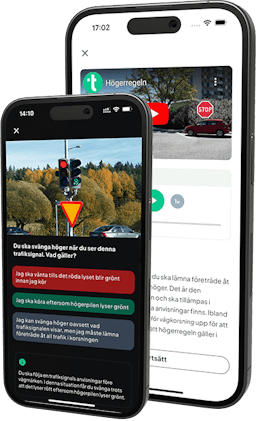Mandatory signs give an instruction which you are obliged to follow. For example, they might tell you that you have to drive in a particular direction. If a mandatory sign indicates that a certain type of traffic is permitted then this means that all other traffic is prohibited. For example, a pedestrian path may only be used by pedestrians and all other traffic is prohibited.
Mandatory direction of travel
A mandatory direction of travel means that you must drive in the direction of the arrows. The following direction signs indicate that you must:
- Drive to the left (A)
- Drive to the right (B)
- Continue straight ahead (C)

- Turn left or right (A)
- Turn left (B)
- Turn right (C)

- Drive straight ahead or turn to the left (A)
- Drive straight ahead or turn to the right (B)
- This mandatory sign indicates that vehicles carrying hazardous goods must follow the directional arrow (C)

Mandatory carriageway
Mandatory signs can also indicate which carriageway you need to drive in. In such cases, you should pass the road sign on the side indicated by the arrow.
- Carriageway keep right (A). You must pass the road sign on the right.
- Carriageway keep left (B). You must pass the road sign on the left.
- Carriageway right or left (C). You can pass the road sign on either the right or the left.

- Roundabout. At roundabouts, you must drive in the direction indicated by the arrows.

Mandatory carriageway for certain types of traffic
These mandatory signs indicate that only a certain type of traffic is permitted on the carriageway.
- Bike path (A). Bicycles and class II mopeds can use the bike path.
- Pedestrian path (B). Only pedestrians can use the pedestrian path.
- Pedestrian and bike path (C). Shared path for both pedestrians and cyclists.

- Pedestrian and bike path (A). Separated path for pedestrians and cyclists.
- Bridle path (B). Horses and pedestrians can use the bridle path.
- Route for off-road motor vehicles and trailers (C). Pedestrians and skiers can use this route as well.

- Lane or carriageway for public transport (A). The lane may also be used by class II mopeds and cyclists. Public transport vehicles are those operating a timetabled service such as trams or buses.
- End of lane or carriageway for public transport (B)



